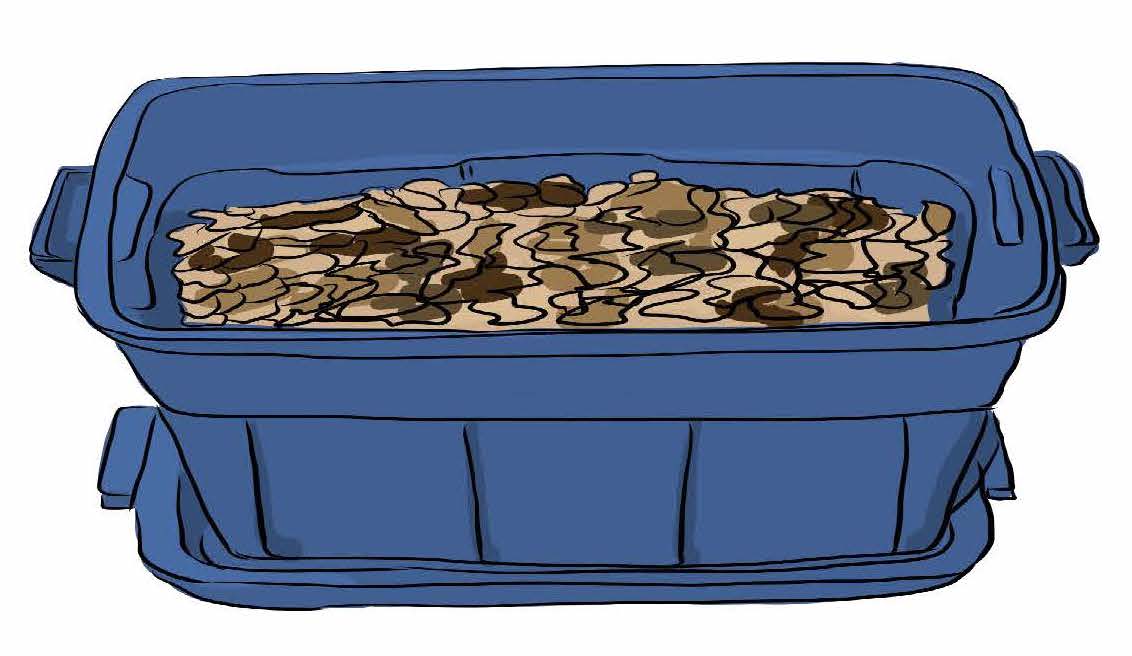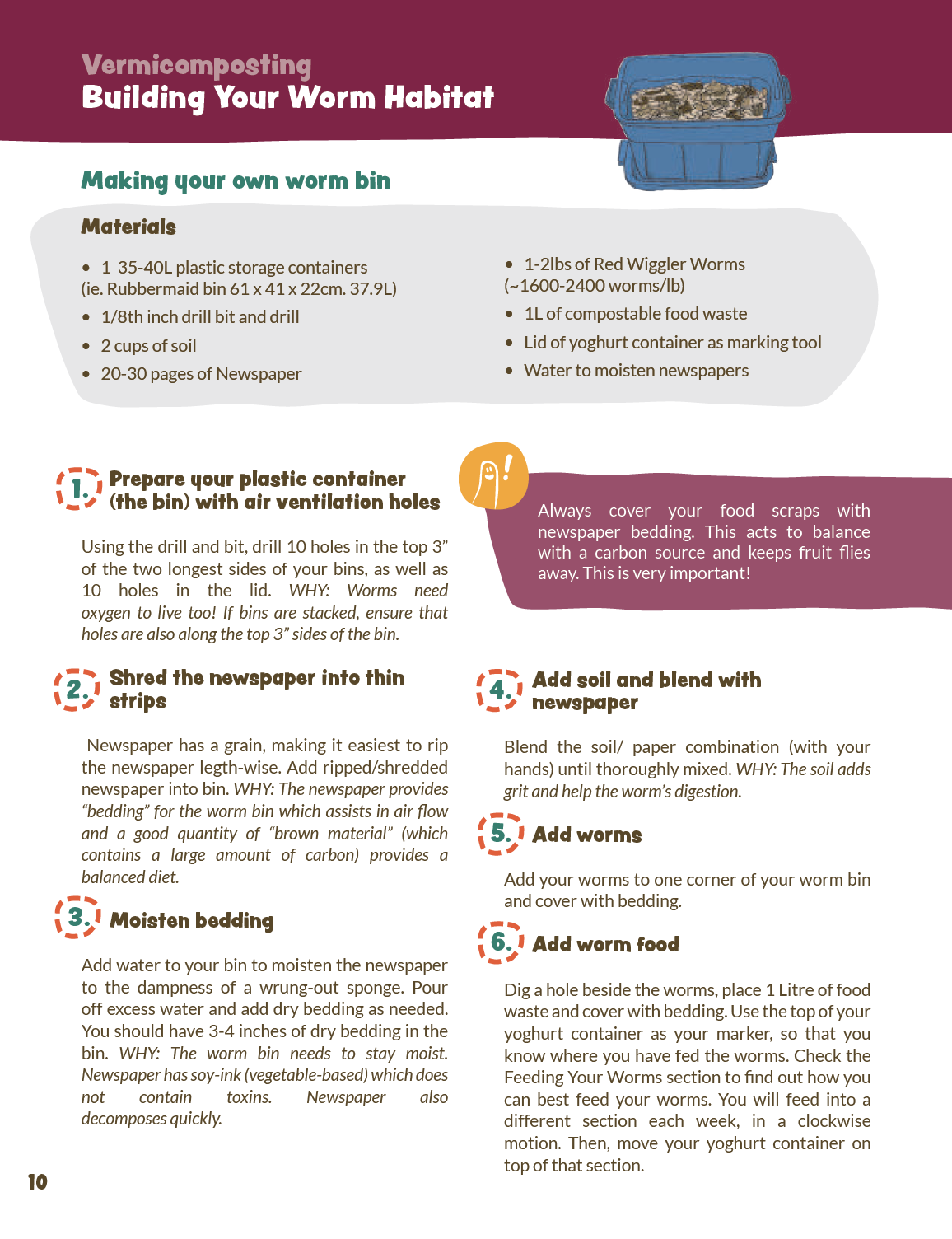What is a Worm Bin?
A worm bin serves to contain the entire vermicomposting operation (bedding, worms and food). Your worm bin should be made of dark material (no light!), have a lid, and provide good ventilation while also maintaining moisture. Eventually your vermicompost system will become its own mini-ecosystem with micro and macro-organisms, helping the worms turn your waste into nutrient rich compost!

What supplies will you need to make a worm bin?
- Worms
- A 35-40L Rubbermaid container
- 1/8th drill bit and drill
- 2 cups of soil
- 20-30 pages newspaper
- 1L compostable food waste
- Yoghurt lid as marking tool
- Water to moisten newspapers
Where should I put my worm bin?
Keep your bin somewhere away from heavy traffic or vibrations. You can store your worm bin outside in the shade or garage during warmer months, but your worms will not survive freezing temperatures.
Worms will work most effectively in temperatures of 15 degrees Celsius to 26 degrees Celsius.
Make a Worm Learning Station!
To make the most of your worm bin, consider setting up a learning station with your worm bin. You can set out your bin, forks for digging through, a sprayer/mister for adding moisture, petri dishes for observation, extra bedding, measuring cups to measure food waste by volume, a scale, paper towels, magnifying glass, pH testers, flashlight, books and reference materials. Encourage students to use their journal for observations!
A Note on Worm Bin Bedding
Composting worms require moist bedding in their worm bin.
Almost any carbon source can be used as bedding in a worm bin, but some are better than others. We believe shredded newspaper is the best worm bedding. Newspapers are printed with vegetable ink and do not used bleached paper. Make sure you do not use the glossy, colored paper. Other sources of bedding include cardboard, egg cartons, leaves or coconut coir.
Worm bedding serves a few purposes:
- Controls moisture level
- Provides extra food if needed
- Provides space for breeding
- Contains smell, if any
- Provides temporary respite for worms if conditions are not ideal
It is also recommended to add some ordinary garden soil to your worm bin as it will be ingested into the worm’s gizzard and help them digest their food.
Now, build your own!
Download our 1-page worm bin building directions to get started with your very own worm farm in your classroom.
Looking for worms??
Check out these worm suppliers compiled by City Farmer HERE!

